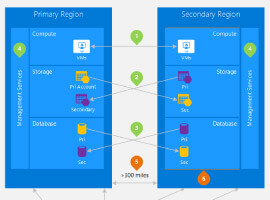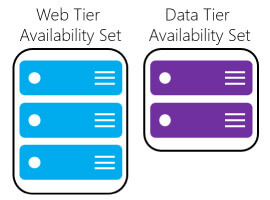I’m pretty sure you already heard about Sway. Presented by Microsoft as the new way to create and share interactive reports, presentations, personal stories, and more. But what is Sway exactly? Really? And what could be the future of this product? This is what I propose to discuss in this post with a first high level overview of the features.
But first… What is Sway?
In software like in pretty much everything, we love to explain new things through comparisons with products we already know. For example, when we need to describe Sway, we are talking about PowerPoint. But Sway is more than just PowerPoint. When we are using this analogy, we want to express the fact that using these tools we can tell stories, share ideas. In the same way we can do that in Word, PowerPoint or a Webpage. In fact, we are thinking about publishing and Content Management.
Sway means: control or influence a person.
This is exactly what we are all trying to achieve with our publications. But that’s true about publication in general. That could be a blog post, an article on a web site but also in a newspaper, a proposal, a sales pitch, etc… In fact, when we are talking about Word, PowerPoint or Excel, we are talking about the container. Exactly in the same way we are using SharePoint Publishing feature to segregate the content from the container, we need to separate the story from the form. The main difference between SharePoint Publishing and Sway is the capacity to extend simply, without any customizations requirement. I can easily aggregate content from multiple corporate or public sources like Excel, SQL Database, Bing, Facebook, OneNote, etc… without any complex operations, just to connect on these sources.
This is exactly what Sway is… A tool to capture, collect and aggregate content before organizing it in a story.
Microsoft Sway is an online service. Recently integrated with Office 365. There’s no Desktop client. All you need is just a web browser.
Let’s create a new sway:

From your Sway.com personal page, you can easily import an existing document (Word, PowerPoint, PDF) or create a new one

From the create new sway page, no need to save your story, you just have to stay focused on what story you want to tell. The left zone will contain elements, called cards, you can drag and drop to the middle zone to add it to your story line. Following the chosen card and the type of content, you just have to follow instruction to build your story.

To add content from external source, you just have to select insert in the main menu. Sway Suggested will use machine learning to propose some content based on your story card content and your personal profile. You can Add images from Bing, flickr or video from YouTube, etc…

Of course you can apply a customized style to your story like applying a theme to a web page or an Office document. Fonts, colors and backgrounds can be customized

And Sway offers different kind of navigation modes between pages or cards of your story.
Here is what we can say very quickly to introduce Sway. More content will come in the near future to present deeper all the features.
Publication in Office 365
When we talk about Publication in Office 365 we are thinking about SharePoint Online. Integrated in SharePoint 2007 Server, Microsoft Content Management Server provided all the publishing features in SharePoint platform. But if you just have a look about what have been released about publishing in the last 2 SharePoint versions, we can see that even if Search change a lot the way we can crawl the publishing content, on the features themselves nothing really changed since Microsoft Content management Server and SharePoint 2007. And probably because the way people publish does not change so much since that time. We were still using predefined and hardly structured forms to let the user add content. Some select form to add some multimedia content but nothing really new… Until 2013 where Microsoft decided to deprecated Public Facing Websites option on Office 365. This situation creates a strange situation because even if SharePoint Server is still useable as a dedicated public facing website with most of the needed publishing features, Microsoft suggest to use another CMS solution hosted in Azure instead of SharePoint Online.
We heard many different things about new publishing system called InfoPedia, part of Next Gen Portals, but without clear announcement about availability. But let’s have a look on some of the recent features delivered in Office 365.
With the new Blog you can find in your profile page in Delve (Delve > Me > Blog), we can see a different proposition but similar idea of online direct editing

You can easily insert new content in your publication without any additional theming or navigation option. But the content is already part of your Office 365 and easily findable from Delve. You will find more details about this new Blog features in the slide deck of a session I was lucky to present in SharePoint Saturday NYC last year (https://doc.co/fofUqT).

Here from the home page you can easily share publicly information, journal post (Blog post) and document. If you try to add a new post, even if the link ishttps://docs.com/createjournal, you will be redirected to an integrated new Sway story line.

What I would like to demonstrate is everything is already ready to use Sway as the new publishing system in Office 365 ;). The “Standard” publishing features are still available in SharePoint Server 2016 but these new ones could be only available Online in Office 365 like PowerBI for Business Intelligence features. The only missing things are Sway public APIs. We can see that the navigation option does not appear in the docs.com context. Probably because we want to keep the navigation consistent between all site pages but of course the site is fully responsive and the Sway page can be consulted also in the Sway rich client on any device.

When the post is published, we can easily bring additional options to the Sway Story like analytics about the story (Likes, Views, Ratings, etc.), share it on social networks (as a part of Office 365, sway could easily share on Yammer and the content could be presented in Delve), Pinned on a board or a collection, etc.
The very interesting thing is to think about this Docs.com web site as the external sharing site for any Office 365/OneDrive for business document or blog post that need to be share externally or publically.
Just a last interesting thing about Docs.com, the public profile with publishing features also provided by Sway.

The profile page is highly customizable with all the publishing features of Sway and all the different cards. Even if it’s concerning a profile, publishing information is still telling a story.
In conclusion
So do you think Sway could become the future global publishing system in Office 365?
I think I already got an idea 😉 But even if not, Sway stays a very interesting backend way to produce publishing content in a story line. Content that can be consume in any page in SharePoint or any other system using the Embed feature.
Of course, like all Office 365, Sway got his own Uservoice: https://sway.uservoice.com/forums/264674-sway and Of course, like all Office 365 and Azure services, new features and improvement are released regularly. Just to get an overview about feature officially “In Development” or “Previously released”, just have a look on http://fasttrack.microsoft.com/roadmap and filter the items on Sway keyword.
Stay tuned cause I will be back with a short video about “building a Corporate Video script using Sway” in the next weeks.
Want to learn more on this topic? Nicolas will be speaking at ESPC16. Join him in person in Vienna
Interested in similar blogs? Read Senthamil Selvan step by step guide on Azure PowerApps
About the Author: 
Since 1996, Nicolas Georgeault works on portals and collaboration tools. More particularly on the social networks usage in a business context with open source and editor’s solutions. Since 2001, he has specialized in the use and implementation of SharePoint. CIO and Senior SharePoint Architect for Negotium Technologies in Montreal, he has the honor of being MVP SharePoint Server for 5 years. He now works for developing a new concept called “Enterprise Brain” which is a method to get the best of Enterprise Big Data using social mining tools.
Although he recently moved to Canada, he continues to participate in the French SharePoint user group in France and Montreal, and he leads the Office 365 User Group Montreal. He is, along with several of his MVP colleagues from the User Group SharePoint France (UGSF), an author of French books “MS SharePoint Server 2010” and “MS SharePoint Server 2013” published by Editions Lavoisier under the direction of Pierre Erol Giraudy.










